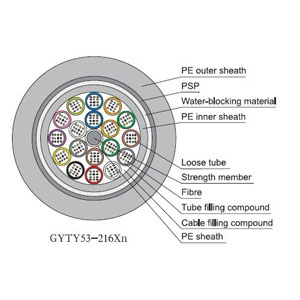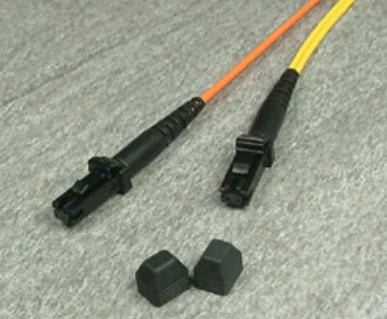-

- Sopto Home
-

- Special Topic
-

- Fiber Optics knowledge
-

- What Should You Think About Before Selecting Fiber Cables?
Fiber Optics knowledge
- Maintained Methods of Fusion Splicer Parts
- How to Use the Fiber Optic Cleaver?
- What are Fixed Attenuators & Variable Attenuators?
- Deployable Fiber Optic Systems for Harsh Mining Environments
- Developing Miniature Fiber Optic Cable Has Become the Trend
- Fiber Optic Cleaning Procedures
- 6 Steps to Selecting a Fiber Optic Cable
- Signal Attenuation Introduction
- How Fiber Transmission Works?
SOPTO Special Topic
Certificate



Guarantee
Except products belongs to Bargain Shop section, all products are warranted by SOPTO only to purchasers for resale or for use in business or original equipment manufacturer, against defects in workmanship or materials under normal use (consumables, normal tear and wear excluded) for one year after date of purchase from SOPTO, unless otherwise stated...
Return Policies
Defective products will be accepted for exchange, at our discretion, within 14 days from receipt. Buyer might be requested to return the defective products to SOPTO for verification or authorized service location, as SOPTO designated, shipping costs prepaid. .....
Applications
Fiber Optis can be used in so many fields:
Data Storage Equipment
Interconnects,Networking
Gigabit Ethernet
FTTx, HDTV,CATV
Aerospace & Avionics
Data Transfer Tests
Network Equipment
Broadcast Automotive
Electronics,Sensing
Oil & Gas, Imaging
Outside Plant,Central Office
Harsh Environment
Data Transmission
Illumination,Institutions
Ship to Shore,Education
Simulation,Military,Space
Unmanned Aerial Vehicles
Semiconductor Equipment
Diagnostics & Troubleshooting
Premise Networks Carrier Networks
Independent Telecommunication Providers
SOPTO Products
- Fiber Optic Transceiver Module
- High Speed Cable
- Fiber Optical Cable
- Fiber Optical Patch Cords
- Splitter CWDM DWDM
- PON Solution
- FTTH Box ODF Closure
- PCI-E Network Card
- Network Cables
- Fiber Optical Adapter
- Fiber Optical Attenuator
- Fiber Media Converter
- PDH Multiplexers
- Protocol Converter
- Digital Video Multiplexer
- Fiber Optical Tools
- Compatible
Performance Feature
Fiber Optics knowledge
Recommended


What Should You Think About Before Selecting Fiber Cables?
Sorting through cables and connectivity options could be a frustrating exercise. It's hard enough working through the categories and levels of copper networking cables, where most cables end with similar connector. What happens when you start looking at fiber cables? This is where things can definitely get confusing! This article tells you how to select the right kind of fiber cables.
Let's move on off by saying that fiber optic cables can be used in a huge variety of applications, from small office LANs, to data centers, to inter-continental communication links. The information lines that connect between North America and Europe, for example, are constructed with fiber optic cable strung underneath the ocean.

Direct Buried Fiber Optical Cable
Our discussion in this article will focus mainly on the kinds of cables present in those small-scale networks closer to home, and in particular to pre-terminated cables which may be designed for installation, called “patch cords”, “pre-terms”, or any other similar nicknames like fiber patch cables. Prior to you buying, you should make clear the following parameters.
Multimode and Single mode
One of the first things to determine when selecting fiber optic cables is the “mode” of fiber that you'll require. The mode of a fiber cable describes how light beams travel within the fiber cables themselves. It's important because the two modes aren't compatible with each other, which means that you can't substitute one for that other.
There's really not much variety with single mode patch cords, but there's for multimode. You will find varieties described as OM1, OM2, OM3 and OM4 (OM means the “optical mode”). Basically, these varieties have different capabilities around speed, bandwidth, and distance, and the right type to make use of will be based mostly upon the hardware that is being used with them, and any other fiber the patch cords will be connecting to.
Fiber Optic Cable Jackets
Pre-term fiber can be used in a variety of installation environments, and as a result, may need different jacket materials. The standard jacket type is called OFNR, which means “Optical Fiber Non-conductive Riser”. This can be a long-winded way of saying, there's no metal in it, so it won't conduct stray electrical current, and it can be installed in a riser application (going in one floor up to the next, for instance).
Patch cords are also available with OFNP, or plenum jackets, which are ideal for use in plenum environments for example drop-ceilings or raised floors. Many data centers and server rooms have requirements for plenum-rated cables, and also the local fire codes will invariably have the final say in what jacket type is required.
The ultimate choice for jacket type is LSZH, which means “Low Smoke Zero Halogen”, that is a jacket produced from special compounds that provide off very little smoke with no toxic halogen compounds when burned. Again, seek advice from the neighborhood fire code authority to be certain of the requirements from the installation before making the jacket selection.
Simplex and Duplex
Simplex and duplex have only the difference between one fiber or two, and between one connector at each end of the cable, or two connectors each and every end. Duplex patch cords are the most common type, because the method in which most fiber electronics work is they need two fibers to speak. One is used to transmit data signals, and the other receives them. However, sometimes, just one fiber is required, so simplex patch cords may be essential for certain applications. If you aren't sure, you can always be on the safe side by ordering duplex patch cords, and just one of these two fibers.
Fiber Optic Cable Connectors
Remember what we should said at first about copper category cables? No matter what level of twisted pair you were coping with (Cat 5, 5e, etc), you always knew you would be dealing with an 8-position modular RJ-45 plug around the end from the cable. Well, with fiber patch cords, there is a few possibilities when it comes to connectors. The common connector types are FC, LC, SC, ST and MTRJ etc.

These are the most typical selections that you will find when choosing amongst patch cords. If you're able to determine which of these characteristics you need, it is highly likely you will make the right choice when custom fiber optic cables with suitable parameters.
For more info, please browse our website. For purchasing fiber optic assembly products, please contact a Sopto representative by calling 86-755-36946668, or by sending an email to info@sopto.com.





-180x180.JPG)
